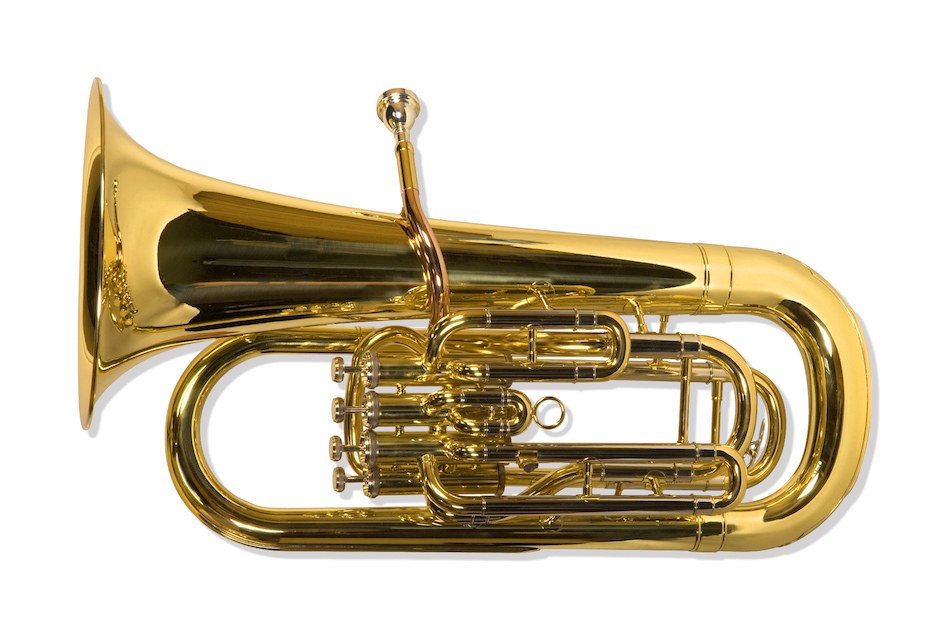Cox was diagnosed at age seven with Duchenne Muscular Dystrophy, the leading fatal genetic disorder in children with a life expectancy of 20 years. His respiratory capacity has declined his entire life and stands at less than 30 percent now.
Marching Onward
While the Aggie spirit can never be told, it can be heard—through music. Your support will strengthen the arts core at Texas A&M and ensure a strong Aggie voice for decades to come.
“This building is a reward for all musical organizations at Texas A&M,” said David Dunlap ’83, who gave $3 million to fund a new drill field for the Aggie Band. “As a second-generation Aggie bandsman, I am particularly attached to the band. At halftime, everyone stands and takes tremendous pride in their performance and in the tradition they represent. A new drill field and facility is befitting of their organization and of every campus musical group.”
Former students, corporations, Aggie families, classes and friends can include their names or the names of loved ones as a permanent part of the Music Activities Center by funding a space, room or pillar inside or outside the building. Gifts will be recognized in a tasteful architectural display reflective of each donor’s commitment to Aggieland.
“After a drill on Kyle Field, the grass is flattened in rows from the band’s footprints,” said Jennifer Armstrong ’17, a piccolo player in the Aggie band. “Our practice field is beyond flattened grass; it is full of well-worn holes. The new Dunlap Drill Field will bolster the band’s tradition of excellence, and a new Music Activities Center will carry on the legacy of Aggie music for generations.”
“I believe that band is keeping me alive longer,” he said. “Band was my family in high school and is beginning to feel like my family again in college. The doctors who study my disease are puzzled that I can play the euphonium given my respiratory capacity. I can’t explain it either, but I’m thankful that I can be part of something bigger than myself.”
In addition to the band hall’s interior disadvantages, the natural grass Joe T. Haney Drill Field is irreparably ragged and uneven due to continued use by the Aggie Band since the 1940s. It remains the band’s primary drill field, though the athletic department allows the use of its indoor football practice facility near the end of each rehearsal week.
“The Aggie Band prides itself on not repeating drills or music at any football game,” Almany said. “But one fall about six years back before an Oklahoma State game, it rained so hard that we could not practice on the drill field the entire week due to mud. We had to repeat the drill from the week before with no rehearsals in between.”
New Notes
While the band hall’s condition has not inhibited quality music education, directors anticipate a new era of excellence for Texas A&M musicians with the Music Activities Center’s completion.
“When you hear a student say something like, ‘My junior high band hall is better than this,’ you know you’re in bad shape,” said Almany. “We are at the point of turning away eager and talented students because we cannot expand our musical organizations.”
The new facility, located on the corner of George Bush Drive and Coke Street (also known as Duncan Field or the Old Bonfire Field), will solve scheduling, acoustic, safety and storage problems while amplifying the Aggie music experience. It will feature four rehearsal halls with state-of-the-art acoustics and adequate space so that multiple groups can rehearse at once, eliminating scheduling conflicts. Forty soundproof practice rooms, available with after-hours swipe-card access, will ensure that students may practice at their leisure.

Aggie Band formations change every week and every year. With the exception of the 4-way cross that is performed once each year, there are no other standard formations.
Addressing clutter and security issues, the new climate-controlled facility will contain ample storage for sheet music libraries and instruments, which students will store in individually coded lockers. An instrument repair room is also included.
A 120-yard artificial turf drill field, funded through a $3 million gift from former Aggie band member David Dunlap ’83 and his wife Anne, will eliminate uneven or unsafe rehearsal conditions and keep the Aggie band in step close to the Quad.
“Even more important, this facility will allow the instrumental and choral ensembles to work together and perfect our craft better than ever,” said Lt. Col. Jay Brewer ’81, senior associate director of the Fightin’ Texas Aggie Band. “Aggies deserve state-of-the-art. We get it in athletics and academics, so it’s only natural that our student musicians also get first-class treatment.”